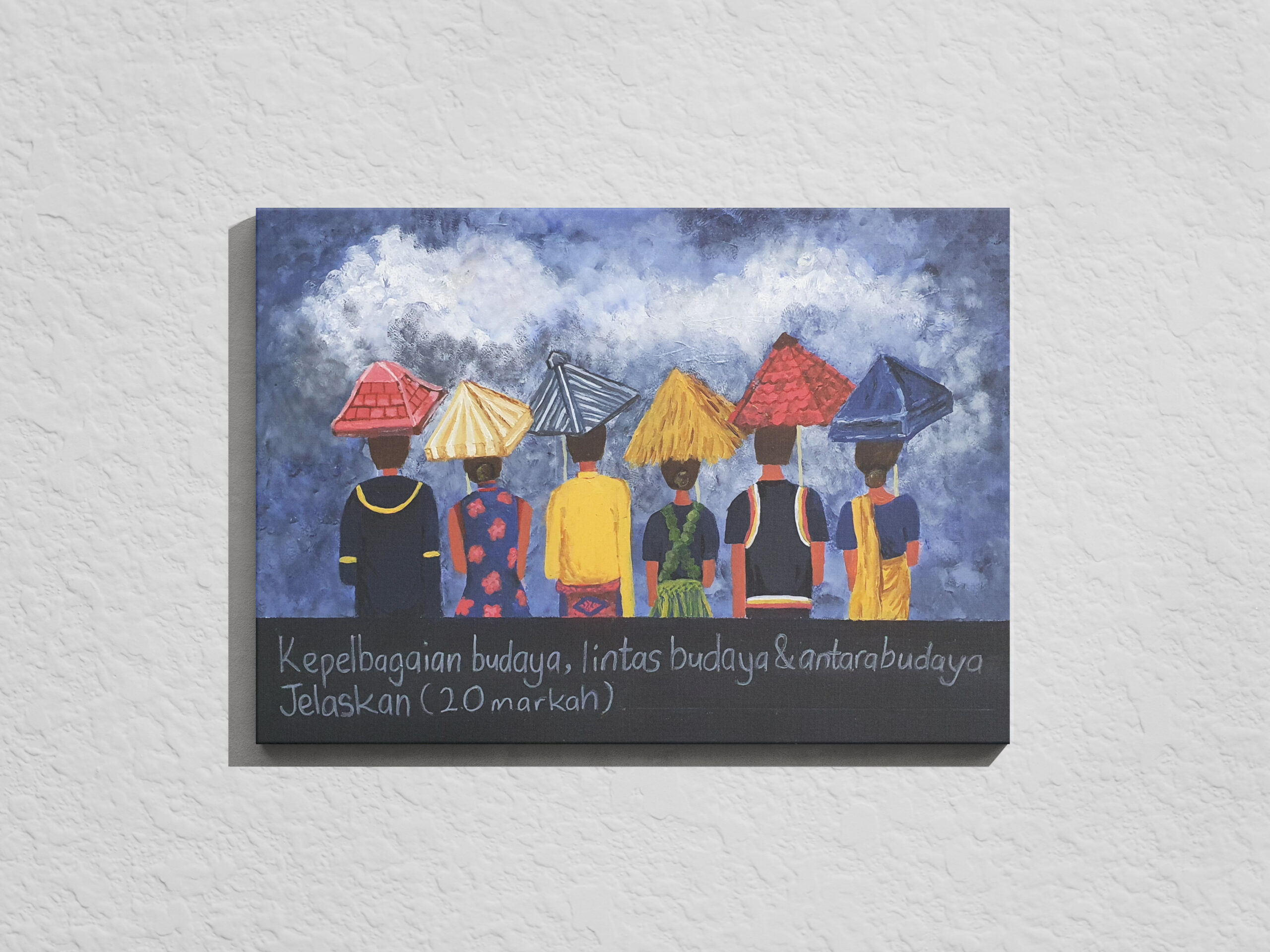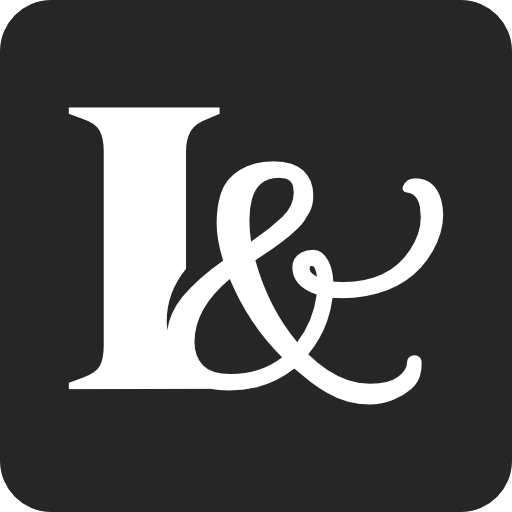Year
- 2025
Medium
- Acrylic on Canvas
Dimensions
- 60 x 42cm

02. Approach
There was a call to submit for Di Bawah Langit yang Sama for upcoming artists in 2025. I decided to try it because I love the theme. My work was not selected for the exhibition, but I am including it as a portfolio piece. Some of the ideas came from the March Substack Challenge by Art Stack. So why take those initial ideas for that challenge and put them into this submission?
My approach to this artwork is very straightforward. Since it features themes related to Malaysia’s independence, I decided to incorporate the colours of Malaysia’s flag, which are red, yellow, blue, and white. As a Malaysian, these colours are ingrained in us, along with the National Anthem and Rukun Negara (National Principles).
I also want to challenge the perception that Malaysians are built from the Malay, Chinese, and Indians. We have more diversity than that, especially our indigenous people from both West and East Malaysia. I drew six characters as a general depiction of looking beyond narratives played out in our communities and textbooks.
I also draw inspiration from being in classrooms. I remember sitting in classrooms listening to teachers teach from the syllabus. Some of these are ingrained in us and acknowledged as part of our psyche. However, rapid globalisation and digitalisation have occurred, and there is a need to evolve the way we learn and question our identity. Hence, I placed a blackboard at the bottom, similar to a box of text found on textbook diagrams. On the blackboard element, I asked a question for Malaysians to consider. The question is “kepelbagaian budaya, lintas budaya dan antara budaya”, which translates to multicultural, cross-cultural, and intercultural. I want people to think about the nuances and not just boast about multiculturalism when we are not able to bridge the differences.
03. Process
There is a difference between sketching in a sketchbook and translating those ideas onto an A2 piece of stretched canvas. I did as much preparation before executing this.
Sketching on Procreate

Initial sketch and scribbles on Procreate
I started with a sketch on Procreate. I keyed in the canvas size, which is 60 x 42 cm. Thankfully, I remember some math, and both of these numbers can be divided by 6. This calculation means each full square is 6 x 7 cm, which I have notated on my sketch. It took a bit of adjustment, but I created a grid which fits the canvas properly.

Once the grid has been calculated on Procreate, I started drawing the grid on A2.
I created a grid to follow the proportions as close as possible. In my previous work, the actual painting and sketch often deviated too much if I did not set the grid properly, especially if it involved my weak points in art, which is human anatomy.
The six people with traditional costumes

I know it looks bad but I had to add colours as blocks to see if the colours distributed evenly.
As for the six people, I decided to draw them in a back view instead of a front-facing view. These people are already identifiable through their traditional costumes, so there was no need to show their faces. This decision also relates to how much we blend in with each other and how others can misinterpret our facial features.
I wanted to stick to a strictly red, blue, yellow, and white colour palette, but I encountered some issues. When I put in the Indigenous people of West and East Malaysia, I realised that their traditional costumes are primarily black. I did surface research and realised that black symbolises the protective spirit in some indigenous cultures. Another interesting thing I observed about the Orang Asli (indigenous people) in Peninsular Malaysia is that their traditional attire often incorporates leaves. There are variations of leaves as accessories. Hence, it appears that Orang Asli clothing is very flexible because it relies on material from the forest. I did not want to change the colour too much, so I opted for a darker blue instead of black to tie it in with the colour palette.
Meanwhile, for the Malays, Chinese, and Indians, their clothing is based on design and cut, with flexible colours. As for the Baju Melayu, I chose yellow because it was part of the colour scheme, not because of its association with Malay royalty. I searched to see if there were any shops in Malaysia selling yellow Baju Melayu, and I found many. While yellow is often associated with royalty, in modern times, it is common to see citizens wearing yellow.

This version almost became my final version but the submission deadline extended, which I could add more details and change the roof on the left.

The final artwork which I fixed the roof and use a white chalk marker to make the question clearer.
04. Challenges
The challenge for this painting was drawing human anatomy. Drawing human anatomy is not my strength, but I wanted to execute the idea that was playing in my head. Other than that, I also wanted these humans to hold the roof above their heads to show that every human needs shelter from the rain. I had to research the perspective of the roof transformed into umbrellas.
05. Final Thoughts
This painting was the largest painting that I have done in a long while. Due to space constraints, most of my artworks are in A5 and A4 sizes. It was daunting, and I made many mistakes, but I know this artwork stems from my experiences. It came with a lot of pain and frustration, and this was a way to visually communicate that we need to grow beyond multiculturalism and move towards interculturalism in Malaysia. Let’s embrace our strength in diversity.
Of course, this could have been better, and I rather get this idea out of my mind so I have more mental energy for other creative works to come.
